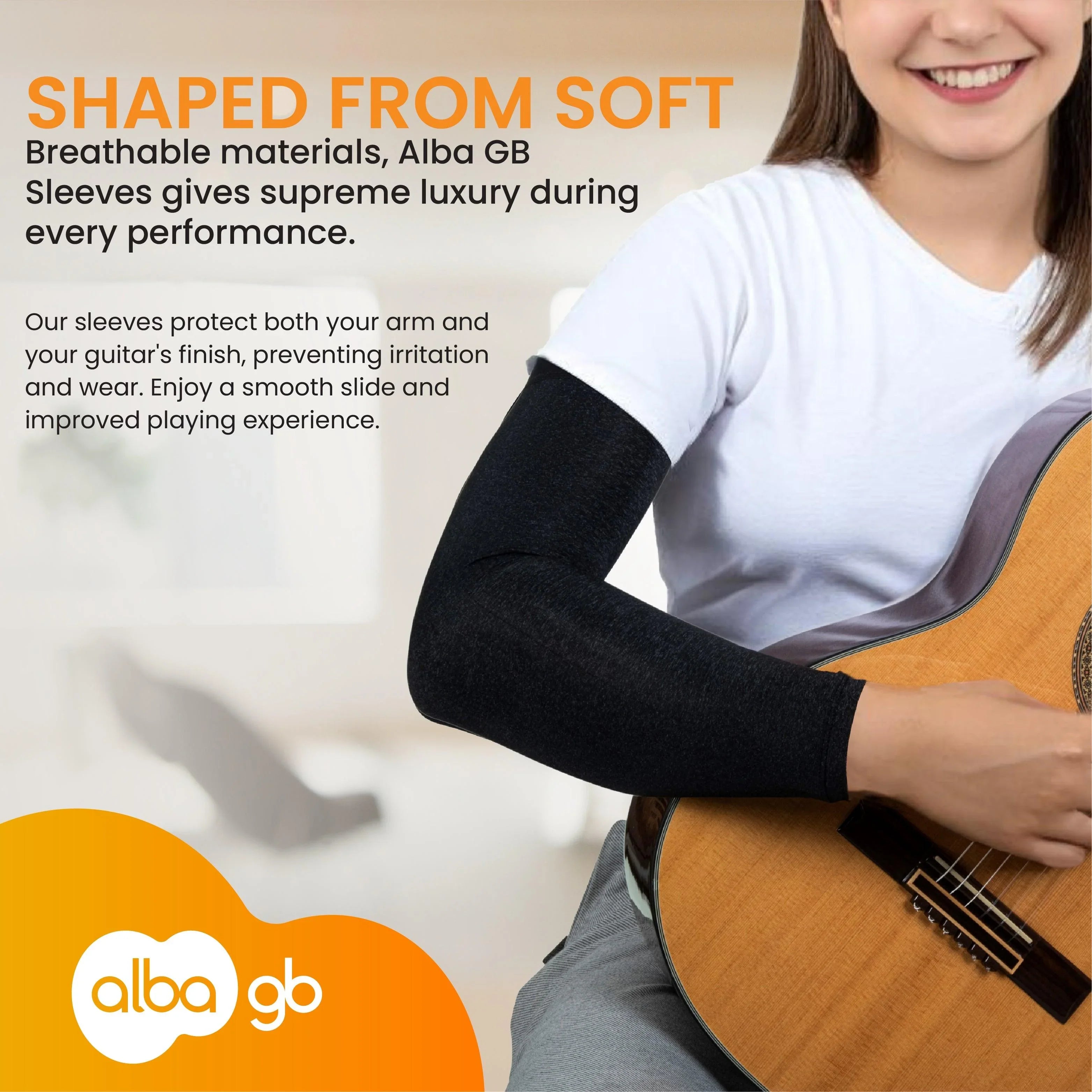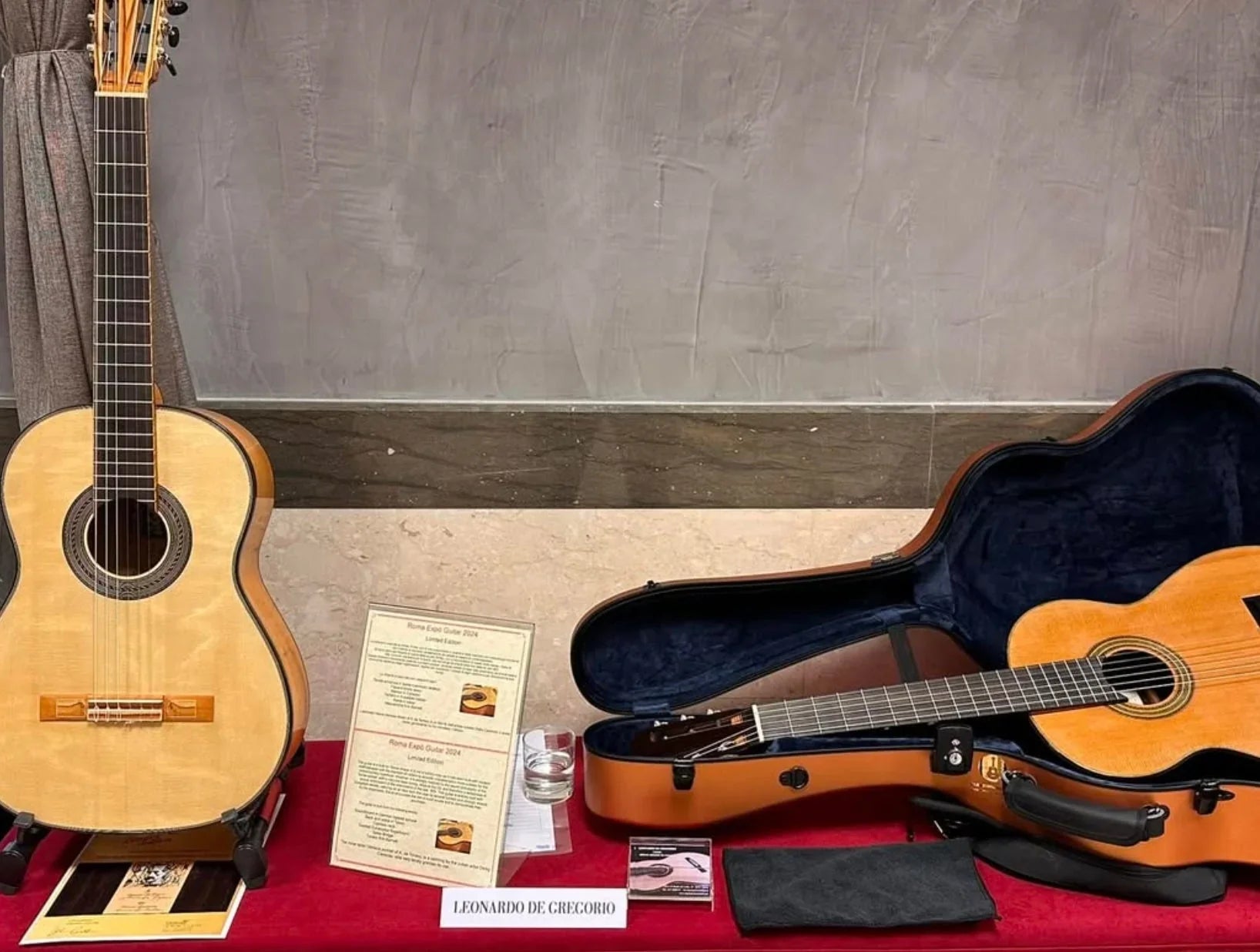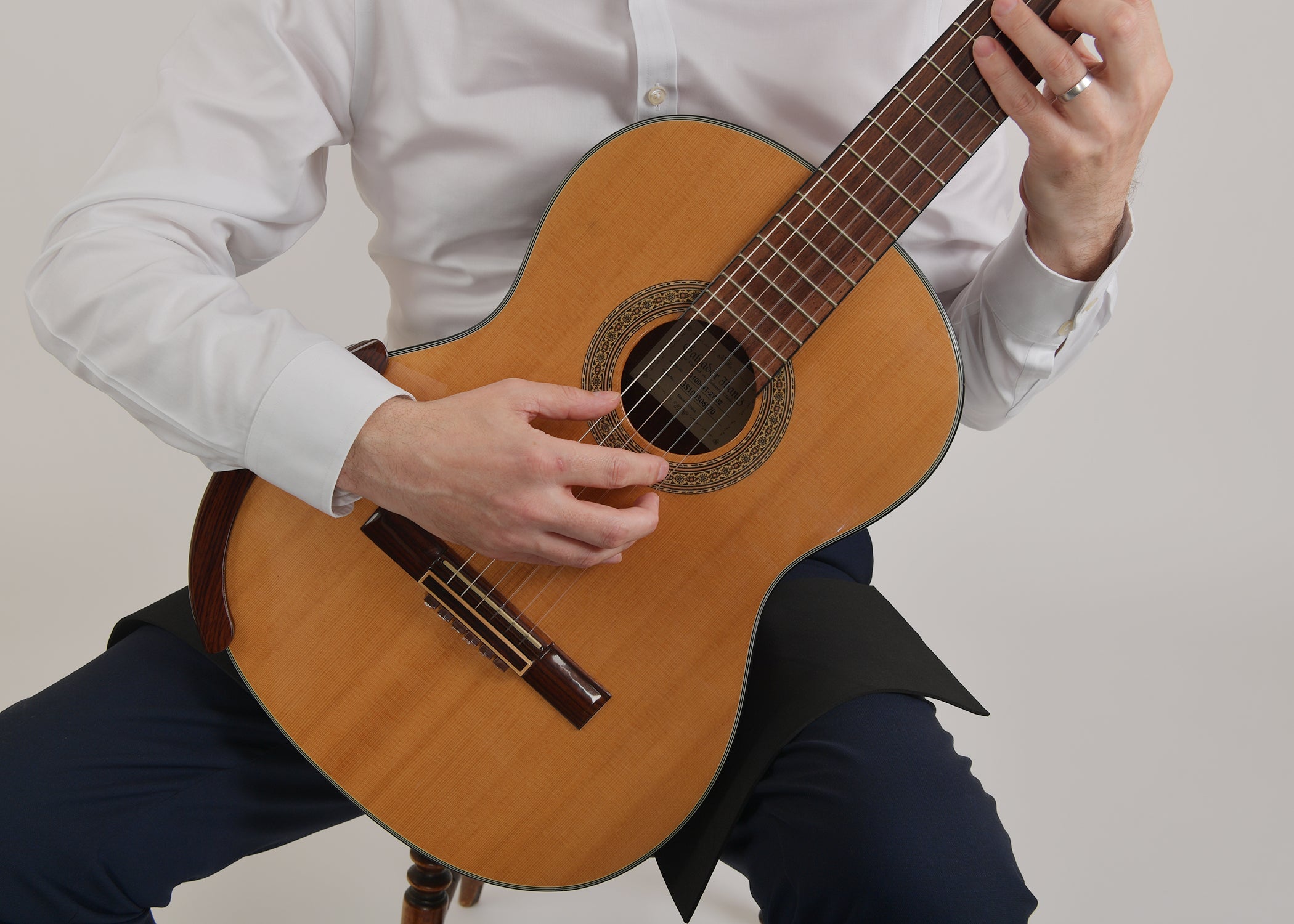At Alba GB, we are proud to work with some of today’s finest classical guitar makers. Among them is Leonardo De Gregorio, a master luthier who brings the best of Italian tradition into modern instruments. Leonardo’s guitars stand out for their balance, sensitivity, and natural beauty. His approach blends classic proportions with careful acoustic design, offering players classical guitars that feel alive under the hands. Over the years, our friendship has grown, both through his trust in our guitar cases and through many deep conversations. Today, we invite you to discover Leonardo’s craft and philosophy firsthand.
The Secret to Building a Truly Balanced Classical Guitar
Alba GB:
Leonardo, your classical guitars are often praised for their balance across all registers. How do you achieve that?
Leonardo De Gregorio:
Thank you. For me, the top, back, and sides must behave as a single breathing system. The top must respond easily, while the back and sides must reflect vibrations without losing energy. I fine-tune the back stiffness and adjust the sides to keep the guitar open and powerful. When the whole body works together, the sound becomes complete, not forced.
Read Also: Leonardo De Gregorio: Italian Luthiery Tradition & Double Top Classical Guitars (Part 2)
Classical Guitar Bracing: Small Adjustments, Big Impact
Alba GB:
Your bracing work is highly respected. What goals do you have when you shape your braces?
Leonardo De Gregorio:
I mainly use fan bracing, but I adjust everything, the angles, the heights, the layout. The bracing controls how energy spreads across the soundboard. A lighter brace can open up color and texture. A stronger one keeps articulation clean. Every small change affects how a classical guitar speaks.
Fast Response, Singing Sustain: Building for Musicality
Alba GB:
Your guitars combine quick attack with strong sustain. How do you design for both?
Leonardo De Gregorio:
It’s all about mass and flexibility near the bridge. A flexible top responds fast. The body must then keep the energy alive after the first attack. It’s a balance between speed and depth.
Read Also: Leonardo De Gregorio: A Journey Through Craftsmanship and Collaboration (Part 3)
Choosing the Right Top Wood for a Classical Guitar
Alba GB:
You work with both spruce and cedar. How do you decide which to use?
Leonardo De Gregorio:
Each has its voice. Spruce needs careful thicknessing. It offers elasticity and a wide dynamic range. Cedar is more direct but needs strong structural control. My decision depends on the sound, color, and character I want to give the player.
Double Top Classical Guitars: A Modern Option with Natural Sound
Alba GB:
Double-top classical guitars are becoming more popular. What is your approach to building them?
Leonardo De Gregorio:
I use two very thin outer layers, usually spruce or cedar, with a Nomex core. The goal is a flexible but stable top. A double-top classical guitar should not just be louder. It should offer better control, more color, and an easier dynamic range. It must stay musical, not mechanical.
Read Also: Classical Guitar Armrest: Comfort, Protection, and Superior Sound
The Influence of Italian Tradition in Classical Guitar Making
Alba GB:
Italian luthiery has many regional styles. Are there traditions you feel closest to?
Leonardo De Gregorio:
Definitely. I feel close to the tradition of central and southern Italy, where lightness, openness, and balance dominate. I aim to build guitars that breathe naturally and respond freely, not instruments that feel heavy or rigid. Proportion and natural movement are essential parts of my work.
Building Classical Guitars that Mature Over Time
Alba GB:
Your guitars are known for how they develop their voice as they age. How do you achieve that?
Leonardo De Gregorio:
I build light, but in a way that lets the wood continue to move naturally. I avoid anything that locks the structure too much. A good classical guitar should open with time, gaining depth, warmth, and range. I want my guitars to stay alive with the player, not peak early and fade.
Read Also: The Evolution of Classical Guitar Supports: Steadiness, Innovation
Craftsmanship Always Evolving: New Ideas in the Workshop
Alba GB:
Are you working on any new ideas right now?
Leonardo De Gregorio:
I’ve been studying 19th-century guitars, not to copy them, but to learn from their simplicity. They remind me that natural material behavior often creates the most musical results. Some of these lessons are starting to influence my latest classical guitars for sale.
A Luthier Dedicated to Sound and Tradition
Alba GB:
Thank you so much, Leonardo. It’s always a real pleasure to have these conversations.
Leonardo De Gregorio:
Thank you. I truly enjoy talking with people who care deeply about classical guitar craftsmanship.
Alba GB:
We’ll be back with Part 2 very soon—and we’ll dive even deeper into Leonardo’s approach to crafting high-end classical guitars for today’s players.
Read Also: How Plastic Guitar Beads Improve Classical Guitar’s Sound
Later this year, you’ll be able to browse and buy professional classical guitars directly at albagb.com. Create your account and join our mailing list to stay updated.
At Alba GB, we collaborate with some of the finest luthiers around. If you’re looking for classical guitars that blend tradition with modern playability, keep an eye out for upcoming releases from Leonardo De Gregorio. From double top designs to carefully selected vintage models, our collection is built for players who want something truly refined.
Visit albagb.com to view our range or get in touch with us to learn more about our high-end classical guitars soon.





Leave a comment
This site is protected by hCaptcha and the hCaptcha Privacy Policy and Terms of Service apply.